

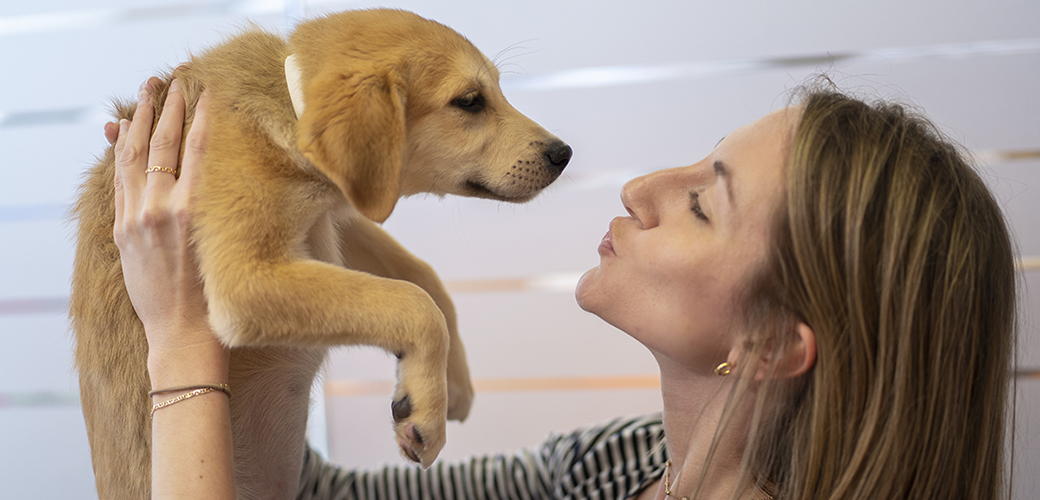
With many businesses closed during the COVID-19 pandemic and most of us spending our time indoors, pet parents are looking for new ways to keep their furry friends safe, happy and healthy. For many pets with longer fur who would normally see a groomer every six to eight weeks, things may be getting a little hairy.
Here’s our top five tips for safely grooming your pet at home and keeping them looking sharp.
1. Bathe and Brush

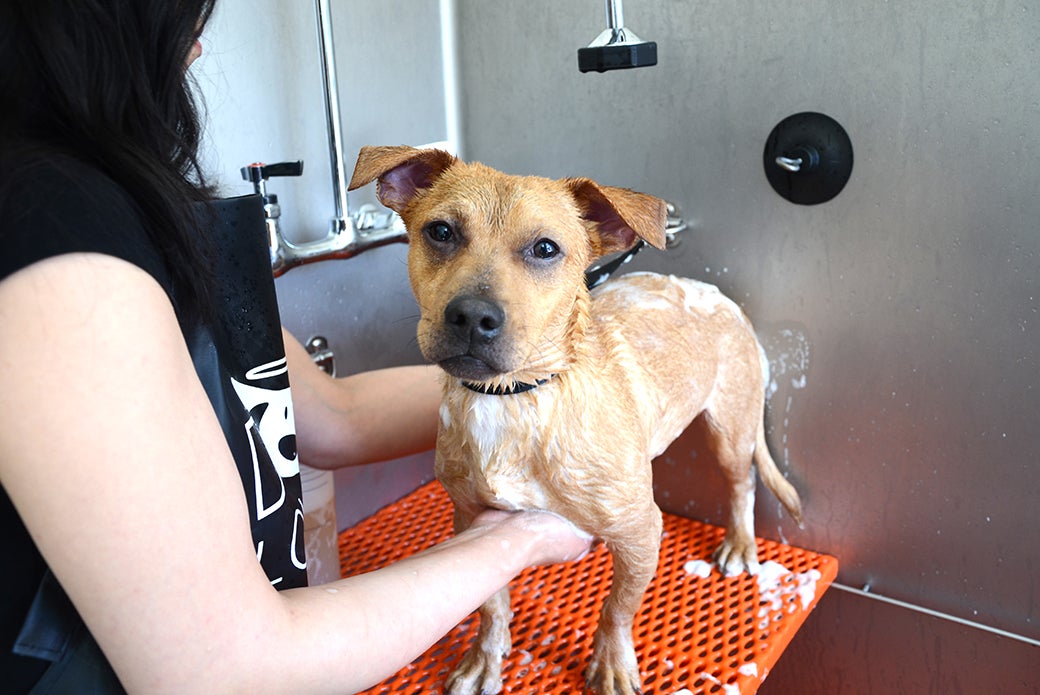
The ASPCA recommends bathing your dog at least once every three months, but some may require more frequent baths if they spend a lot of time outdoors or have skin problems. Pups with loose facial skin or wrinkles—such as Shar Peis and Pugs—will need special attention. To prevent dirt and bacteria from causing irritation and infection, clean the folds with damp cotton. Always thoroughly dry the areas between the folds. Our feline friends are well-equipped to tackle their own hair care needs. But if they get into something sticky or smelly, you may need to give them a bath.
Regular grooming with a brush or comb will also help keep your pet’s hair in good condition by removing dirt, spreading natural oils throughout her coat, preventing tangles and keeping her skin clean and irritant-free. The way you brush your pet—and how often—will largely depend on his or her coat type.
- If your dog has a smooth, short coat (like that of a Chihuahua, Boxer or Basset Hound): You only need to brush once a week. Use a rubber brush to loosen dead skin and dirt and follow with bristle brush to remove dead hair. Polish your low-maintenance pooch with a chamois cloth and she’s ready to shine!
- If your dog has short, dense fur that’s prone to matting, like that of a retriever: Brushing once a week is fine. Use a slicker brush to remove tangles and catch dead hair with a bristle brush. Don’t forget to comb her tail!
- If your dog has a long, luxurious coat, such as that of a Yorkshire terrier: Daily attention is necessary. Every day you’ll need to remove tangles with a slicker brush. Next, brush her coat with a bristle brush. If you have a long-haired dog with a coat like a Collie’s or an Afghan hound’s, follow the steps above, but also be sure to comb through the fur and trim the hair around the feet. For long-haired pooches, it’s a good idea to set up a daily grooming routine to remove tangles and prevent mats. Gently tease out tangles with a slicker brush, and then brush your pet with a bristle brush. If matting is particularly dense, you may try clipping the hair, taking care not to come near the skin.

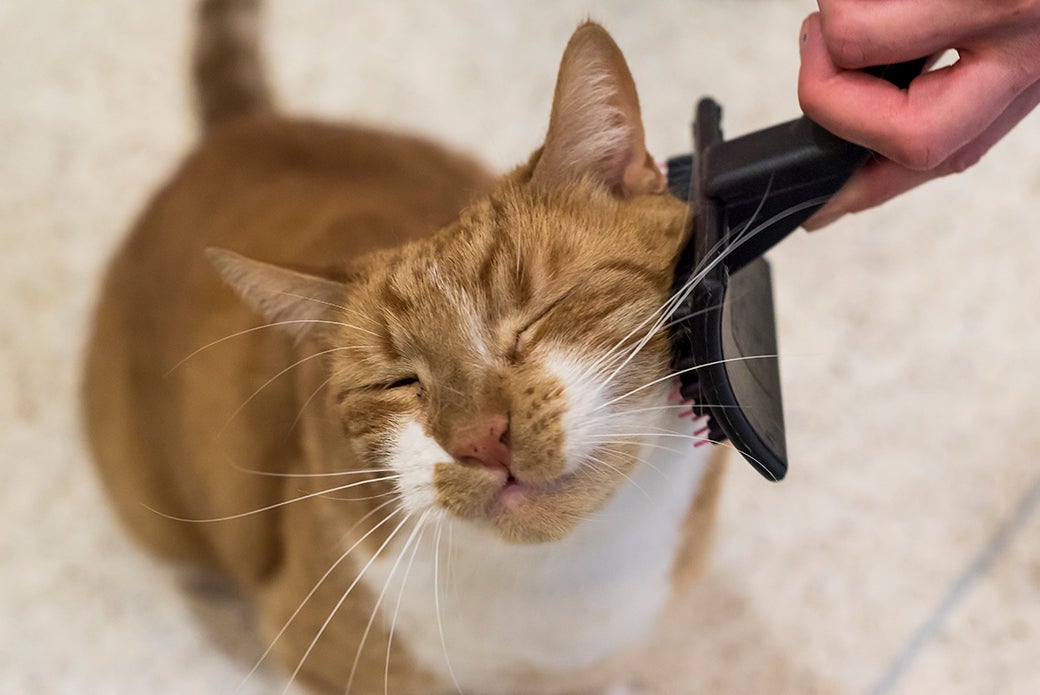
For kitties, one or two brushings per week will help keep a healthy glow—and you’ll find that regular sessions are especially beneficial when your cat ages and is no longer able to groom so meticulously on her own.
2. Trim, Trim, Trim

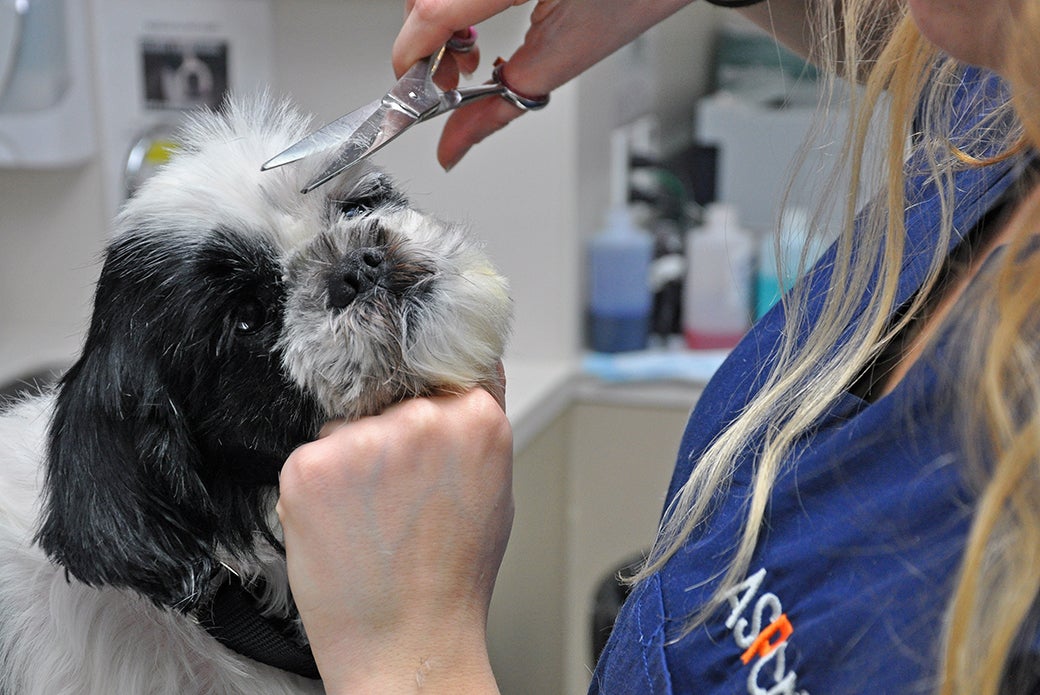
While it’s safe to lightly trim your pet’s hair, we advise that you NEVER shave your pet. When trimming at home, trim dry, clean fur around the face, feet and tail. Be very careful with your scissors and when trimming around the ears, use your free hand to hold the ear to make sure you only trim the excess fur.
3. Paw-dicure

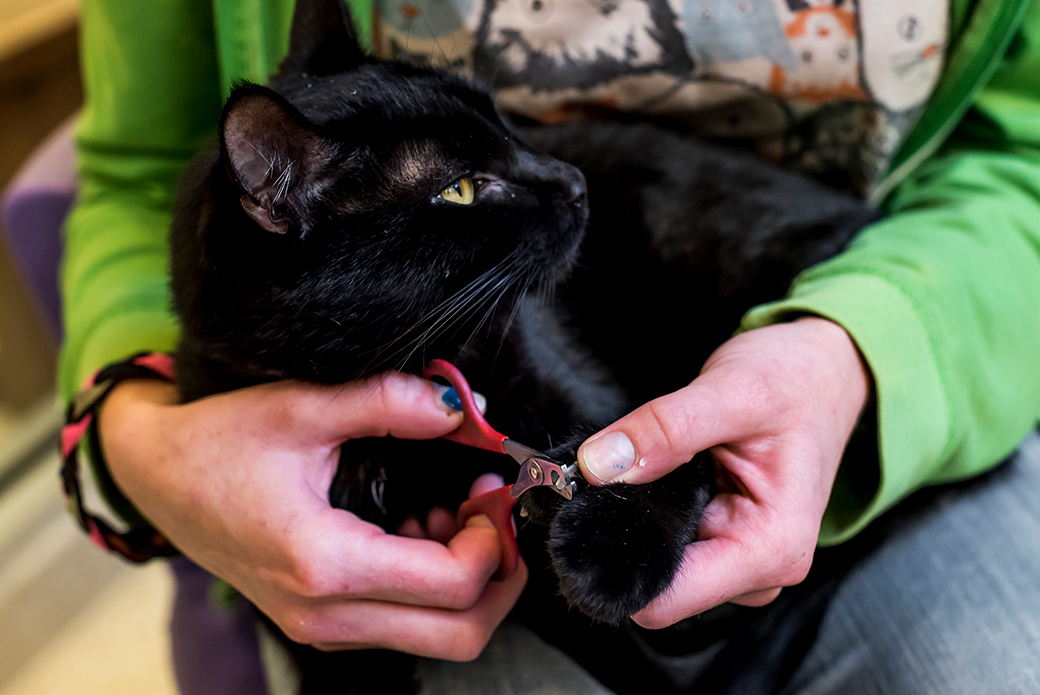
As a rule of thumb, a dog’s nails should be trimmed when they just about touch the ground when they walk. If your pet’s nails are clicking or getting snagged on the floor, it’s time for a trim. A nail-trimming every ten days to two weeks is recommended for cats and giving them something to scratch is recommended.
If you do hit the quick while trimming at home, your dog will probably yelp and might even struggle. You’ll want to apply styptic powder or corn starch to the bleeding nail tip ASAP. Apply a little bit of pressure as you press the powder into the wound to make sure it sticks. If bleeding continues for more than a few minutes, please alert your veterinarian, who can check your dog for clotting disorders.
It’s important to check your pet’s feet regularly (both dogs and cats) to make sure they’re free of wounds, infections or foreign objects that can become lodged.
4. Eyes and Ears

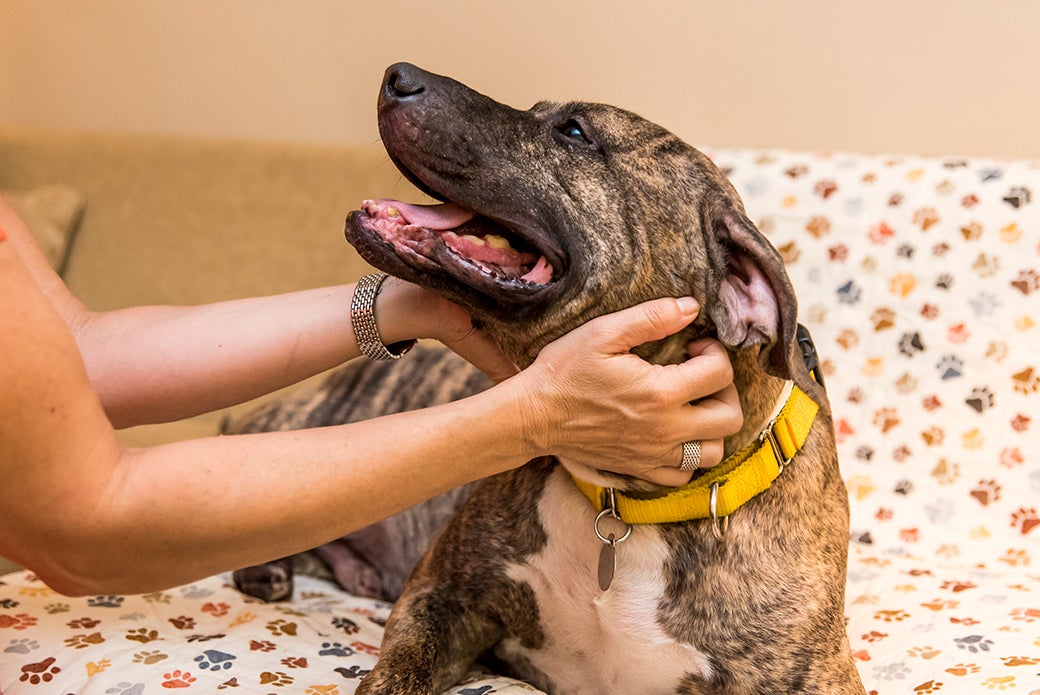
You’ll want to regularly check your pet’s eyes for any tearing, crust, cloudiness or inflammation that may indicate a health problem. Face your pet in a brightly lit area and look into their eyes. They should be clear and bright, and the area around the eyeball should be white. The pupils should be equal in size and there shouldn’t be tearing, discharge or any crust in the corners of their eyes. With your thumb, gently roll down your pet’s lower eyelid and look at the lining. It should be pink, not red or white.
A gentle wipe with a damp cotton ball will help to keep your pet’s eyes gunk-free.
If your dog’s inner ears appear dirty, clean them with a cotton ball or piece of gauze dampened with mineral oil, hydrogen peroxide or a liquid ear cleaner specially formulated for this purpose. Fold your pet’s ear back gently and wipe away any debris or earwax that you can see on the underside of his or her ear and be sure to lift away the dirt and wax rather than rubbing it into the ear.
Inner-ear skin is delicate, so talk to your vet about best cleaning practices.
For kitty ears, a healthy feline ear flap has a layer of hair on its outer surface with no bald spots, and its inner surface is clean and light pink. If you see any discharge, redness or swelling, your cat’s ears should be checked by a veterinarian.
To check your cat’s inner ear, bring them into a quiet room where there are no other pets. Gently fold back each ear and look down into the canal. Healthy inner ears will be pale pink in color, carry no debris or odor and will have minimal if no earwax. If you find that your cat’s ears are caked with wax or you detect an odor, please contact your vet for an exam.
5. Skincare Routine


The condition of your cat or dog’s skin is an indication of her overall health. When a skin problem occurs, your pet may respond with excessive scratching, chewing and/or licking. A wide range of causes—including external parasites and allergies to seasonal changes and stress, or a combination of these—may be to blame. Skin problems are one of the most common reasons pet parents seek veterinary care.
You should always be mindful of your pet’s skin and monitor if they are experiencing any symptoms.
For in-depth tips and tricks on grooming your pets, see our full list for cats and our full list for dogs! If you suspect that your pet is having some issues based on skin condition, eyes or ears, contact your local veterinarian immediately.
Source: Read Full Article